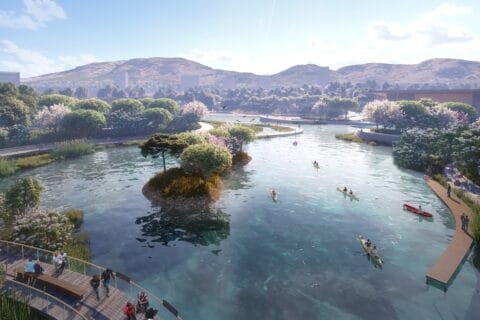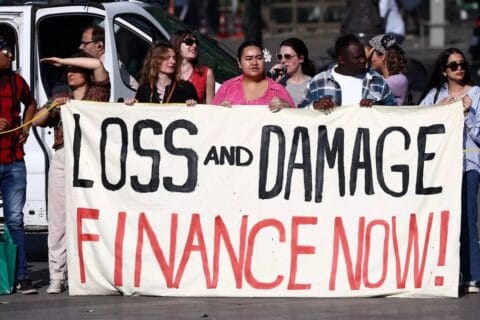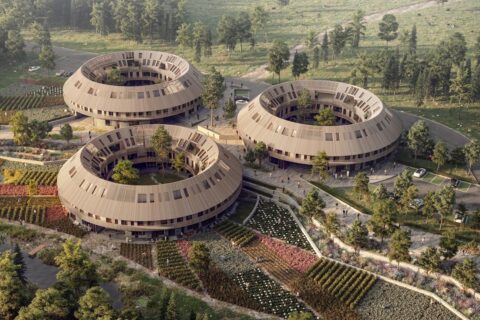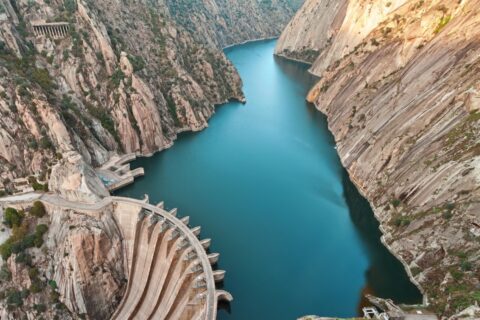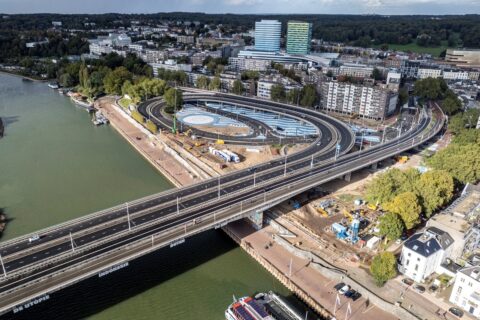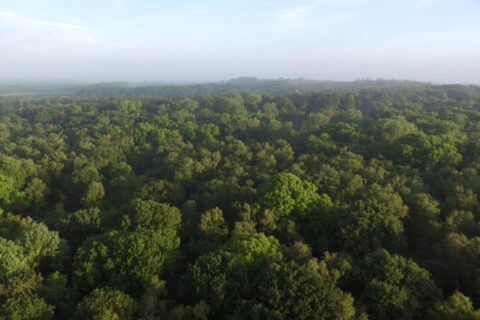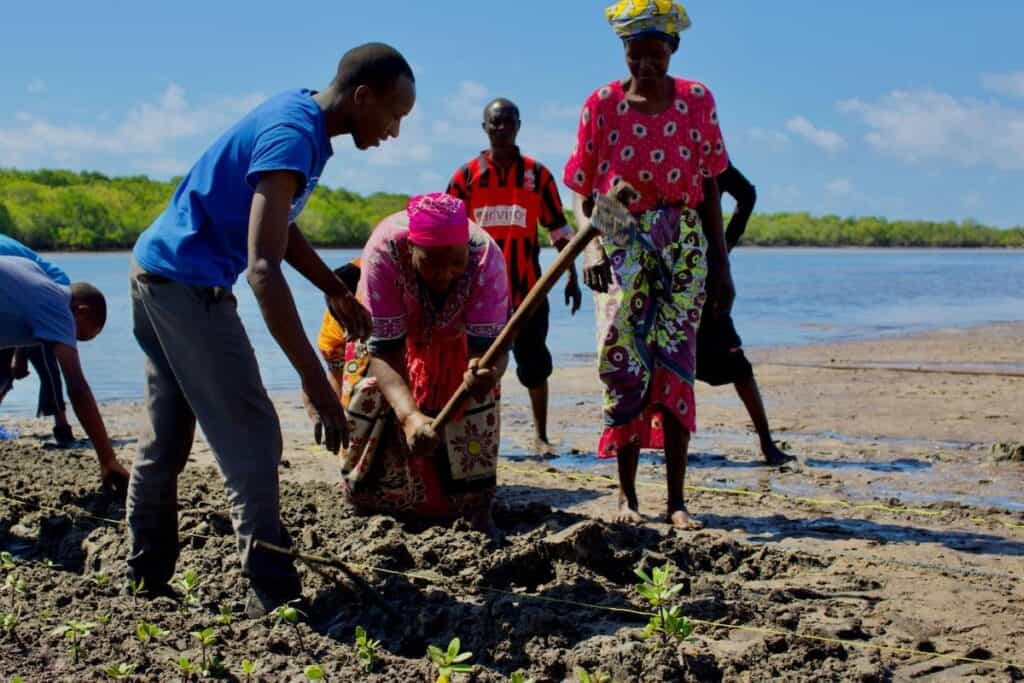
Findings from a landmark study into the use of nature-based solutions to fight climate risks in Africa reveals strong signs of a rise in interest, tempered by ongoing concerns about lack of investment, especially in cities.
A new report by World Resources Institute (WRI) and the World Bank, with contributions from the African Development Bank (AfDB), provides one of the most comprehensive assessments to date on how sub-Saharan Africa is turning to nature to combat mounting risks of flooding, drought, and extreme heat.
Growing Resilience: Unlocking the Potential of Nature-Based Solutions for Climate Resilience in Sub-Saharan Africa analyses nearly 300 projects over the past decade to identify what works, key barriers, and strategies to scale up nature-based solutions (NBS) to promote green, resilient development.
The report shows a steady increase in the adoption of NBS projects, with the number of new projects initiated growing by an average of 15% annually between 2012 and 2021.
These projects — which include protecting and restoring forests, wetlands, floodplains and coral reefs, often in combination with traditional ‘grey’ (or ‘gray’) infrastructure — are strengthening climate resilience while actively delivering co-benefits like job creation, biodiversity enhancement and social equity.
Investment to back joined-up action
While interest in NBS is growing, the report also finds that more investment is needed.
Between 2012 and 2021, funding for NBS projects in sub-Saharan Africa increased by 23% annually and raised more than $12 billion. While this is a positive step, the figure pales in comparison to Africa’s $100 billion annual infrastructure financing gap.
Going forward, joined-up action is critical — not only environmentally, but also socially and economically — explains Qimiao Fan, World Bank Country Director for Kenya, Rwanda, Somalia and Uganda:
“Nature loss and climate risks are inherently linked, especially in Africa. We need to ensure projects and policies comprehensively address the challenges and offer inclusive and effective solutions for the most vulnerable groups.”
Recommendations respond to climate risk
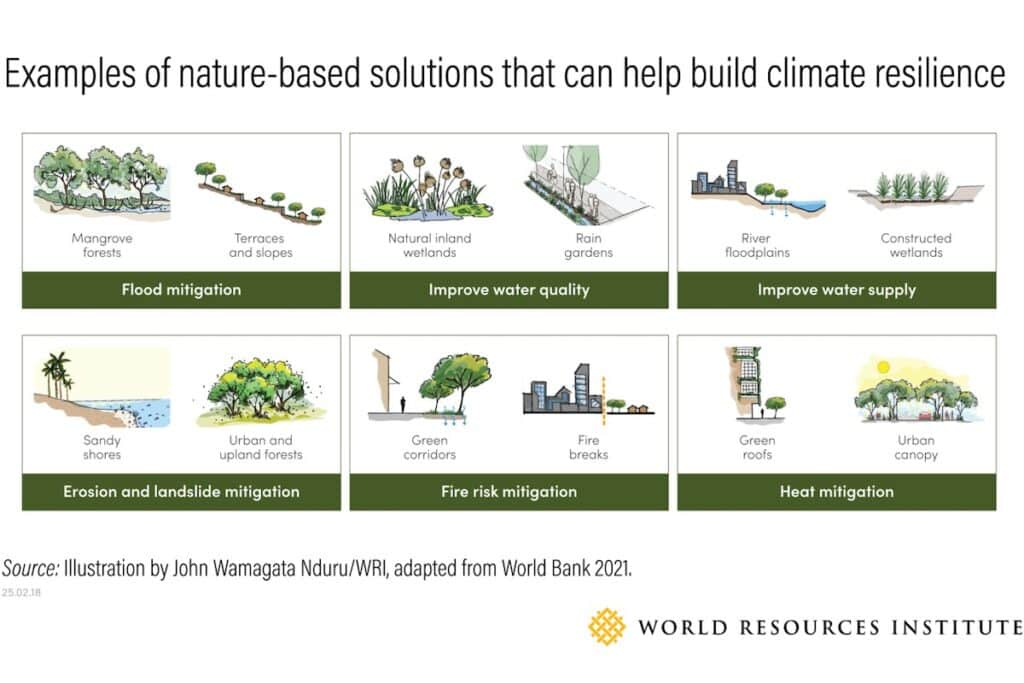
As risks like extreme heat, flooding and water scarcity intensify, sub-Saharan Africa stands at the frontlines of the global climate crisis with Kenya’s floods and unprecedented heatwaves region-wide a stark warning.
The report highlights multiple recommendations to increase adoption of NBS in the region. These include integrating nature into policies and plans, building technical capacity, and diversifying finance.
Infrastructure Accelerator launch for cities
While NBS projects are growing, a critical gap remains: relatively few projects were implemented in cities, despite their potential to address urban challenges (and recent support from the World Bank and AfDB).
Warnings are both urgent and widespread. In all, 70% of African cities face severe climate risks — including flooding, extreme heat and mudslides — while many already struggle with inadequate infrastructure.
Additional investment in traditional solutions like dams and engineered drainage is undoubtedly needed.
However, integrating natural infrastructure, such as restoring and protecting forests in watersheds, can also help to bolster resilience and reduce long-term costs.
Recognising this, and to complement NBS investment preparation efforts of the World Bank and AfDB, WRI is launching the Green-Gray Infrastructure Accelerator to support 11 cities across sub-Saharan Africa.
The initiative will provide technical, policy and finance support, helping these cities lay the groundwork for their initial cohort of projects, while connecting others to financiers to scale existing efforts.
NBS is key to climate resilience, concludes Ani Dasgupta, President & CEO, World Resources Institute:
“We often think of infrastructure in terms of roads, bridges and building — just concrete and steel structures. But nature — forests, trees, wetlands, coral reefs — is just as vital.
“Across Africa, cities and communities are proving that green and grey infrastructure can work together to maximise benefits for people, nature and climate — and the world should take note.”
Research, knowledge, funding and finance
This report was jointly prepared by the Cities4Forests initiative at World Resources Institute (WRI) and the Global Facility for Disaster Reduction and Recovery (GFDRR) at the World Bank.
Key contributions were received from the African Development Bank (AfDB), along with support from the Green Growth Knowledge Partnership (GGKP). Funding contributions came from the Swedish International Development Cooperation Agency (SIDA), the MAVA Foundation, GFDRR, the German Agency for International Cooperation (GIZ), the German Federal Ministry for Economic Cooperation and Development (BMZ), and the Danish International Development Agency (DANIDA).
Founded in 1982, World Resources Institute (WRI) is a global research organisation with offices in Brazil, China, Colombia, India, Indonesia, Mexico and the United States, plus regional offices for Africa and Europe.
With almost 2,000 staff, WRI works globally and in focus countries to meet people’s essential needs; to protect and restore nature; and to stabilise the climate and build resilient communities. It aims to help transform the way that the world produces and uses food and energy, plus designs its cities.
The World Bank Group is one of the world’s largest sources of funding and knowledge for developing countries. Its five institutions share a commitment to reducing poverty, increasing shared prosperity, and promoting sustainable development.
Administered by the World Bank, the Global Facility for Disaster Reduction and Recovery (GFDRR) helps low- and lower-middle-income countries better understand and reduce their vulnerabilities to natural hazards and adapt to climate change.
GFDRR provides grant financing, technical assistance, training, and knowledge-sharing to help mainstream disaster and climate risk management in national and regional policies, strategies, and investment plans.
Further Reading:
- Read/Download the full report into Growing Resilience; also accompanying insights and case studies;
- More on World Resources Institute (WRI); and the Cities4Forests initiative;
- More on the launch of the Green-Gray Infrastructure Accelerator;
- More about the World Bank Group; and Global Facility for Disaster Reduction and Recovery (GFDRR);
- More about the African Development Bank (AfDB);
- Also on SustMeme, Guest Blog: Key role for third sector in climate finance;
- Also on SustMeme, Not just carbon: Policymakers undervalue forests;
- Also on SustMeme, Half of humanity affected by land degradation;
- Also on SustMeme, Reforestation grows towards goal of 100M trees;
- Also on SustMeme, Ageing dams pose growing threat made worse by climate change;
- Also on SustMeme, Flood risk: ‘Future of Infrastructure’ in ‘The Times’.
Check out the full archive of stories on the SustMeme Climate & Energy Channel, now available to Sponsor.

